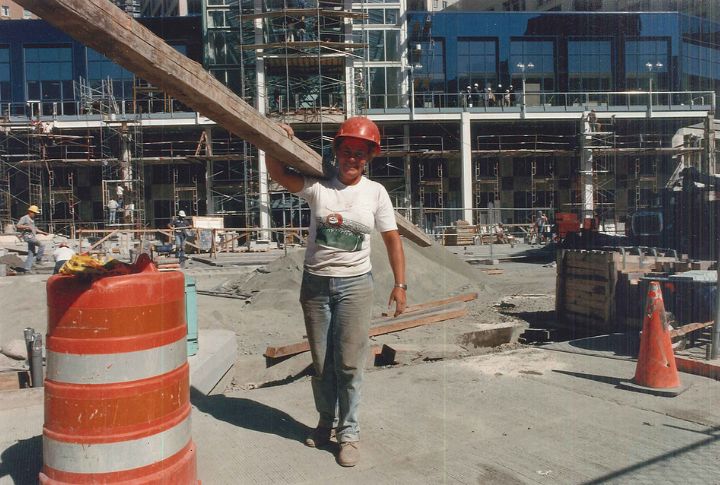
The moment you hear these words, “Back in the day…” you know the speaker is about to drop wisdom. Or they might just want to debunk or compare your approach with how they did it. The thing is, when folks talk about the past, it’s beyond nostalgia; it sometimes goes into setting the record straight.
Memories carry the little truths that don’t always make it into the highlight reel. And that’s exactly where we’re heading next—digging into the truth by hearing from those who lived it.
It Didn’t Always Feel Safe—And That’s Because It Wasn’t
Crime rates are one of the most common nostalgia traps. Many people look back and claim the past was safer, but data tells a more complicated story.
According to historical crime trends cited by The Washington Post and Axios, U.S. homicide rates were actually higher in the early 1980s than in recent years. While 2020 saw a spike, murder rates dropped sharply in 2023 and are continuing to fall through 2025.
It’s not that danger didn’t exist back then—it just didn’t make national headlines the way it does now, often leading to skewed perception. That perception gets even shakier when we take the wheel and head into the next issue: road safety.
Drunk Driving Was A Regular And Risky Ritual
In the past, drinking and driving was practically a weekend tradition. But the cost was steep. As per the National Highway Traffic Safety Administration (NHTSA), alcohol-related traffic fatalities in the early ’80s were significantly higher than they are now.
The Fatality Analysis Reporting System confirms that starting around 1982, deaths began to decline due to stricter DUI laws, improved enforcement, and awareness campaigns. A study by the CDC covering 1982–1989 also affirms this trend.
Those tough lessons eventually led to broader cultural shifts—like rethinking what we breathe in public spaces.
Cigarette Smoke Was In Every Room, All The Time
If you remember getting on a plane and walking straight into a cloud of cigarette smoke, you’re not alone. Smoking used to be the social norm. But the numbers show just how far things have come.
According to the CDC, 42.4% of U.S. adults smoked in 1965. By 2022, that number had dropped to just 11.6%. The American Lung Association credits public education and indoor smoking bans as key contributors to this shift.
And while the smoke started to clear inside, major improvements were happening outdoors, too.
The Air Outside Was Worse Than You May Recall
Everyone talks about how things “felt fresher” back then—but air quality data says otherwise.
As reported by the Environmental Protection Agency (EPA), there has been a significant decrease in the emissions of important pollutants such as nitrogen dioxide and carbon monoxide since 1980. Following the phase-out of leaded gasoline in the mid-1980s, there was a significant decrease in lead levels in the air.
These environmental gains reflect decades of policy changes and technological upgrades that gave the next generation a cleaner start.
Infant Mortality Was Alarmingly High
According to the National Institutes of Health, the U.S. infant mortality rate saw a significant decline by the late 1980s, dropping to approximately 10 deaths per 1,000 live births. CDC data from 1988 further shows that the neonatal mortality rate was 5.4 per 1,000 for white infants and 11.7 for Black infants. These figures reflect a continuation of gradual improvements from the previous year (5.5 and 11.5, respectively), confirming the broader downward trend in infant mortality.
Today, thanks to modern prenatal care, NICU tech, and early screening, many babies survive conditions that would’ve been fatal in previous generations. But survival wasn’t just a concern at birth. It followed people right into the workplace.
Jobs Used to Be Way More Dangerous
People like to say, “Back then, you could walk into a job and stay for life.” True for some, but that job might’ve involved more risk than it does today.
There were 10.9 nonfatal injuries for every 100 workers in 1972, according to the Bureau of Labor Statistics (BLS). It had decreased to just 2.8 by 2018. Additionally, since the mid-1990s, fatal injuries have been progressively declining.
Improved training and better protective gear are part of the initiatives that have reshaped entire industries—from construction sites to warehouse floors.
Your TV Options Were Slim—Until Cable Blew It Open
The myth of “TV was better back then” skips an important detail: there just wasn’t much of it. Britannica notes that in 1980, fewer than a quarter of U.S. households had cable. By 1989, that number grew to nearly 60%.
Nielsen data shows the Big Three networks (ABC, CBS, NBC) saw their prime-time dominance drop from over 90% to 67% by the end of the decade.
The arrival of cable diversified what people watched—and how they saw themselves in the media.
So, Was It Really Better Back Then?
The truth? Nostalgia feels warm because it skips the cold facts. The ’60s, ’70s, and ’80s had iconic moments, no doubt. But they also had higher risks, fewer protections, and limited choices. Older adults who lived through it all aren’t dismissing the past—they’re just pulling back the curtain. When they say, “Back in the day…” listen closely. They’re not just reminiscing—they’re teaching.

